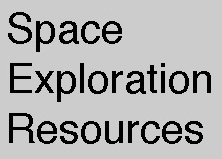
LROC NAC Anaglyphs are made from geometric stereo pairs (two images of the same area on the ground, taken from different view angles under nearly the same illumination). LROC was not designed as a stereo system, but can obtain stereo pairs through images acquired from two orbits (with at least one off-nadir slew). Off- nadir rolls interfere with the data collection of the other instruments, so LROC slew opportunities are limited to four per day.
To generate an anaglyph, we use the USGS Integrated Software for Imagers and Spectrometers (ISIS). The two stereo images are first radiometrically corrected, then map projected using a polar stereographic projection. This projection was chosen because it creates the least amount of distortion in the images, allowing for a better anaglyph. The map projected images are then aligned so the stereo separation is only in the horizontal direction, and so that relative depths are easily perceived by human viewers. The images are then stacked into a 2-band image with the right eye seeing the red channel, and the left eye seeing the blue-green (or cyan) channel. The final anaglyph image is exported to a 3-band 8-bit georeferenced tagged image file format (geo-TIFF) with the green and blue bands being identical.
For more information on the methodology of NAC Anaglyph generation, see Mattson et al. 2012 [1].
[1] S. Mattson, A.S. McEwen, M.S. Robinson, E. Speyerer, B. Archinal, and the LROC Team. Exploring the Moon with LROC-NAC Stereo Anaglyphs. EPSC 2012. Vol 7 EPSC2012-486-2. http://meetingorganizer.copernicus.org/EPSC2012/EPSC2012-486-2.pdf
